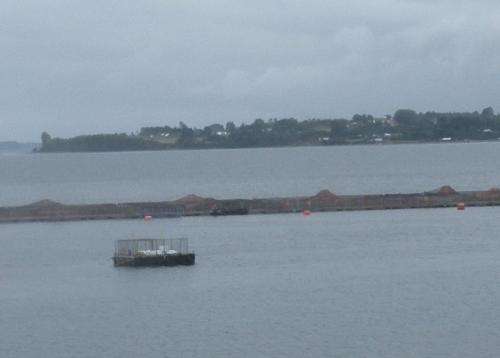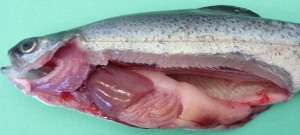Little attention has been paid to the use of antibiotics in the aquaculture industry as one reason for the increase in bacteria resistant to antibiotics and the spread of such resistance to other bacteria.
Since the antibiotics that are used in veterinary medicine and aquaculture belong to the same group of antibiotics as those used in medicines for humans, increased resistance to these medicines will be detrimental to public health.
Syed Qaswar Ali Shah's doctoral research project has studied the genetic foundation for resistance to antibiotics in bacteria isolated from salmon fish in Norway. He collected quinolone-resistant isolates of the bacterium Flavobacterium psychrophilum from rainbow trout and equivalent isolates of Yersinia ruckeri from Atlantic salmon. These bacteria are the cause of bacterial coldwater disease in rainbow trout and redmouth disease in salmon respectively. Only a limited number of antibiotic agents are authorised for use in aquaculture. The development of resistance to quinolones must lead to restrictions in the use of this drug in the aquaculture industry, heightened focus on the prevention of infection and the development of a vaccine against Flavobacterium psychrophilum so that infection is avoided.
Resistance to antibiotics in the aquaculture industry
Syed Qaswar Ali Shah also studied bacteria isolates with a view to discovering genes as codes for resistance to different antibiotics used in veterinary medicine. The bacteria isolates were collected from freshwater carp aquafarms in Pakistan, from tilapia farms in Tanzania and from fish farms in Chile and Norway. A significant proportion of the isolates were found to be resistant to several different types of antibiotics. The isolates from freshwater farms were found to contain more resistant bacteria than those from the seawater farms. In addition, Shah discovered resistance to antibiotics in isolates from freshwater farms which had not used antibiotics as a method of treatment. This can be explained by integrated fish farming operations, whereby fertiliser from other farm animals was used as an important source of feed for the farmed fish.
There were more bacteria resistant to antibiotics in the seawater isolates from Chile than in the isolates from Norway. The higher occurrence in Chile may be explained by the excessive use of antibiotics in salmon farming there: approx. 840 grams of antibiotics per 1000 kg fish in 2008. In comparison, approx. 1 gram per 1000 kg of fish was used in Norway in the same year.
Antibiotics are given as a feed supplement in the aquaculture industry and as a result, the surrounding environment is directly exposed to these drugs. Remains of feed containing antibiotics and undigested antibiotics in fish faeces are deposited in the sediment of the fish farms. Since many of these antibiotic substances are broken down slowly, they contribute towards an accumulation of antibiotics in the environment surrounding the farms which can result in local bacteria selecting genes resistant to antibiotics.
Resistance to antibiotics and public health
The development of acquired resistance in aquatic bacteria can result in a reservoir of resistant bacteria which spread resistance by means of horizontal gene transfer. Many aquatic bacteria and bacteria pathogenic for humans belong to the same group, such as Aeromonas, Acinetobacter, Kluyvera, Vibrio and Yersinia and this makes it easier for the bacteria to transfer resistant genes to other bacteria in the group. The presence of identical factors in bacteria found in aquatic environments and in clinical pathogens is clear proof that resistant genes from bacteria in aquaculture have spread to human pathogens.
Since the spread of bacteria pays no heed to political decisions or geographical borders, the development of resistance to antibiotics poses a serious threat to public health. The main reservoir of genes resistant to antibiotics is thought to exist in aquatic environments, and fish pathogenic bacteria represent a possible intermediate stage in the transfer of resistance from aquatic environments to resistant bacteria on land.
Syed Qaswar Ali Shah defended his doctoral research on 16th November 2012 at the Norwegian School of Veterinary Science (NVH) with a thesis entitled "Antimicrobial resistance in fish pathogenic and aquatic environmental bacteria".
Provided by Norwegian School of Veterinary Science




















